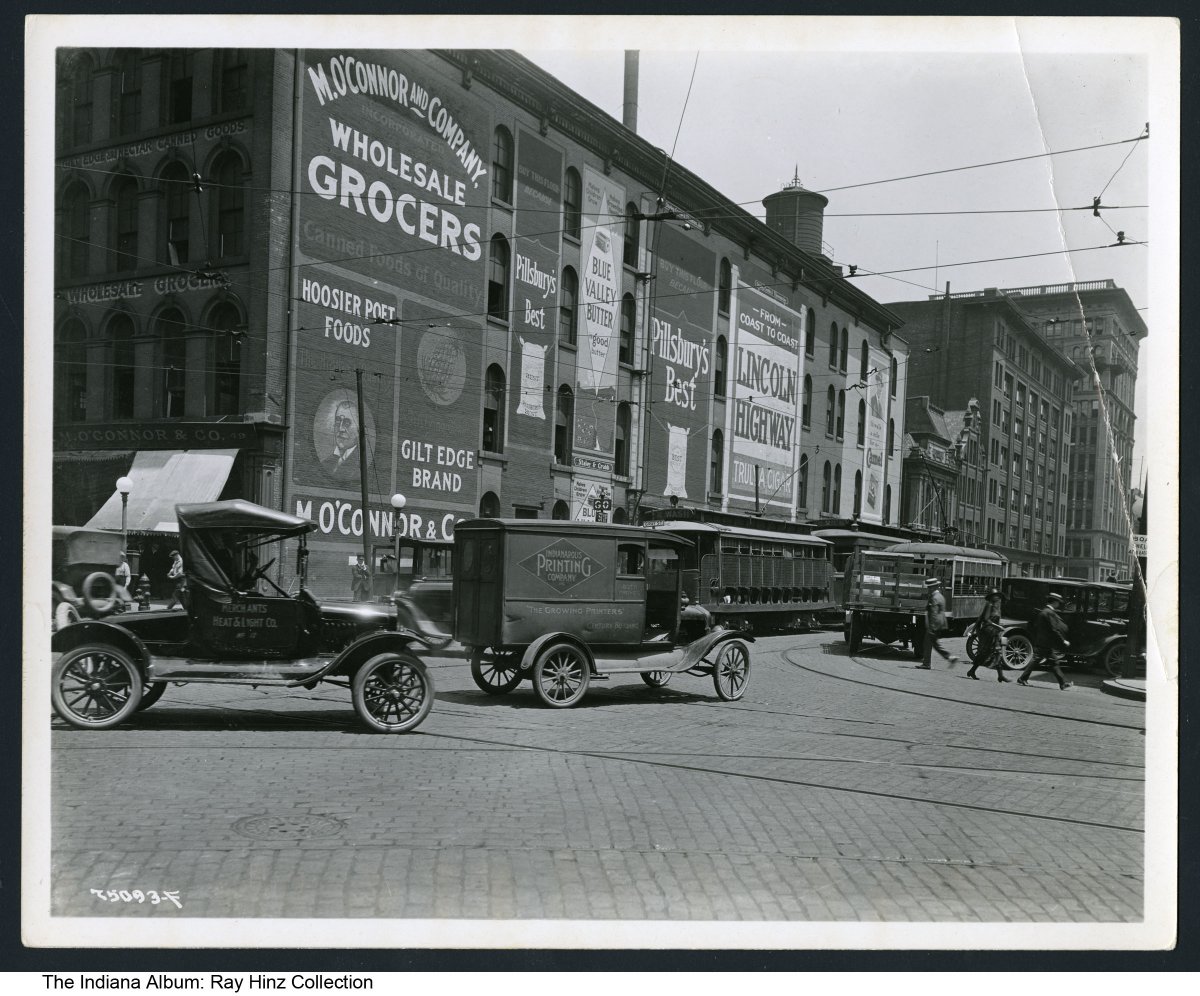Bounded by Maryland, Delaware, and South streets and Capitol Avenue, the Wholesale District grew up around . Its proximity to the railroads and Washington Street retailers allowed local, regional, and national distribution of wholesalers’ merchandise.

Following the Civil War the district rapidly gained businesses. The variety of commercial concerns peaked in the early 1900s when the area housed enterprises ranging from Hatfield Electric Company, suppliers of electric and power equipment, to Mooney-Mueller Drug Company. In addition to the vast range of products available, the area also featured an array of building styles including Gothic and Romanesque Revival, neoclassical, and Italianate.
Among the area’s 47 extant buildings, dating from 1863 to 1930, are Fahnley & McCrea Millinery Company (1905-1906, 240-242 South Meridian Street), the city’s first wholesale millinery house, D. P. Erwin & Company dry goods (1888-1889, 206-214 South Meridian), Holland and Ostermeyer Building (1867-1868, 219 East Maryland Street), which housed the Johnston and Lilly pharmaceutical firm, and the Kothe, Wells and Bauer Company wholesale grocers, whose Ko-We-Ba brand canned goods were a household favorite throughout the state.

The Wholesale District contains the greatest concentration of 19th-century commercial buildings in the city. A Who’s Who of Indianapolis firms designed buildings for the area, among them: (1912-1913, , 45 West Georgia Street), R. P. Daggett & Co. (1888-1889, McKee Building, 202-204 South Meridian Street), (1894-1895, , 47 South Pennsylvania Street), and (1888, George W. Stout Building, 207-209 South Meridian Street).
In 1974, the district was listed on the National Register of Historic Places (boundaries amended 1982). It remains a commercial area where retail businesses are interspersed with restaurants, hotels, and office space.
The Wholesale District is one of seven designated in Indianapolis because it supports a large number of cultural and hospitality offerings, including , the , the (home of the and ), the historic and nationally acclaimed blues club the , and well-known historic .

Help improve this entry
Contribute information, offer corrections, suggest images.
You can also recommend new entries related to this topic.